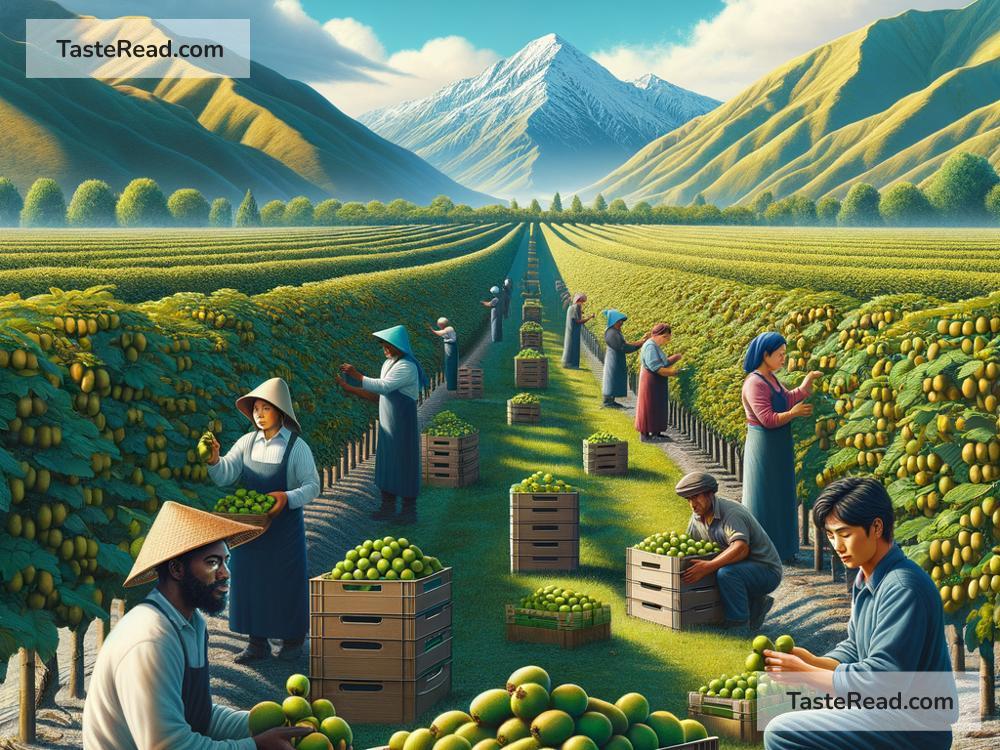The Fascinating History of Kiwi Cultivation in New Zealand
When we hear the word “kiwi,” many of us think of the iconic green fruit with its fuzzy brown skin and bright, refreshing taste. Others think of the kiwi bird, New Zealand’s national symbol. Interestingly, the fruit and the bird share a connection: both are deeply tied to New Zealand. But did you know that the kiwi fruit wasn’t always grown there? In fact, its history is as fascinating as its flavor. Let’s take a journey into the story of how New Zealand became the home of the kiwi fruit, now enjoyed and celebrated around the world.
The Kiwi Fruit’s Roots in China
Kiwi fruit didn’t originate in New Zealand. Its journey began far away in the forests and mountains of China. There, it grew wild and was known as “yang tao,” which translates to “sunny peach.” For centuries, yang tao was appreciated in Chinese cuisine as both a delicious fruit and a source of traditional medicine. However, it was relatively unknown outside of China, and few people in the Western world had tasted it.
The fruit’s global journey started in the early 20th century when missionaries and plant collectors visited China. A British schoolteacher named Mary Isabel Fraser became an important figure in this story. Around 1904, she brought seeds of the yang tao to New Zealand after a visit to China. This small act would eventually change the agricultural history of New Zealand forever.
Early Days of Kiwi Cultivation in New Zealand
Once the seeds arrived in New Zealand, the fruit was first referred to as the “Chinese gooseberry” because of its flavor and similarity to gooseberries. Farmers began planting the seeds, but at the time, no one could predict the success this curious fruit would achieve. For years, Chinese gooseberries were grown in home gardens and local orchards as an experimental crop with modest commercial potential.
It wasn’t until the 1920s that cultivation started to pick up steam. Farmers realized that New Zealand’s mild climate and fertile soil were ideal for growing the tangy fruit. The plants thrived and produced large, flavorful fruit. Growers began to experiment, refining the cultivation process to improve quality, size, and taste. By the mid-20th century, the fruit gained attention as a unique export crop.
A New Name for a Global Audience
One of the most important turning points in kiwi fruit history came in the 1950s. Exporters realized that the name “Chinese gooseberry” didn’t resonate well with international markets, particularly in Europe and North America. It was decided that the fruit needed a makeover: a new name that would make it more appealing and memorable.
The name “kiwi” was chosen, inspired by New Zealand’s national bird, the kiwi. The kiwi bird, known for its small, round body and fuzzy feathers, mirrored the fruit’s appearance perfectly. Naming the fruit after New Zealand’s beloved bird also helped establish it as a proudly New Zealand-grown product. This clever rebranding opened doors to global markets.
The Kiwi Revolution: Success in Exporting
Once kiwi fruit gained its new identity, its popularity skyrocketed. New Zealand growers began exporting the fruit in large quantities to Europe, the United States, and other international markets in the 1960s and 70s. The unique flavor and exotic appeal of the kiwi fruit made it a favorite among consumers worldwide. It was soon featured in everything from fruit salads to desserts.
During this time, New Zealand established itself as the world’s leading kiwi producer. Growers worked hard to perfect the cultivation process, ensuring high-quality fruit that stood out in global markets. Kiwi farming quickly turned into a profitable industry, boosting New Zealand’s economy and showcasing the country’s expertise in horticulture.
Kiwi Cultivation Today
Today, kiwi fruit is grown in many countries, including Italy, Chile, and China, but New Zealand remains a leading producer with a reputation for high-quality kiwis. The country has even developed new varieties, such as the gold kiwi, which has smooth skin and sweeter flesh compared to the traditional green kiwi. These innovations keep New Zealand at the forefront of kiwi cultivation.
Kiwi farming has also become more sustainable over time. Growers are using methods to protect the environment, conserve water, and reduce waste, ensuring that this beloved fruit can be enjoyed for generations to come.
A Symbol of New Zealand Pride
The kiwi fruit is more than just a tasty snack; it’s a symbol of New Zealand’s innovation and agricultural success. From its humble beginnings as a wild fruit in China to its transformation into a global sensation, the kiwi story is a remarkable chapter in history. By adapting, experimenting, and rebranding, New Zealand turned a foreign fruit into its own—and shared it with the world.
Next time you enjoy a kiwi, think of its amazing journey from China to New Zealand and its rise to fame. Whether you eat it sliced, blended into a smoothie, or scooped with a spoon, one thing is clear: this little fruit has a big story to tell!


